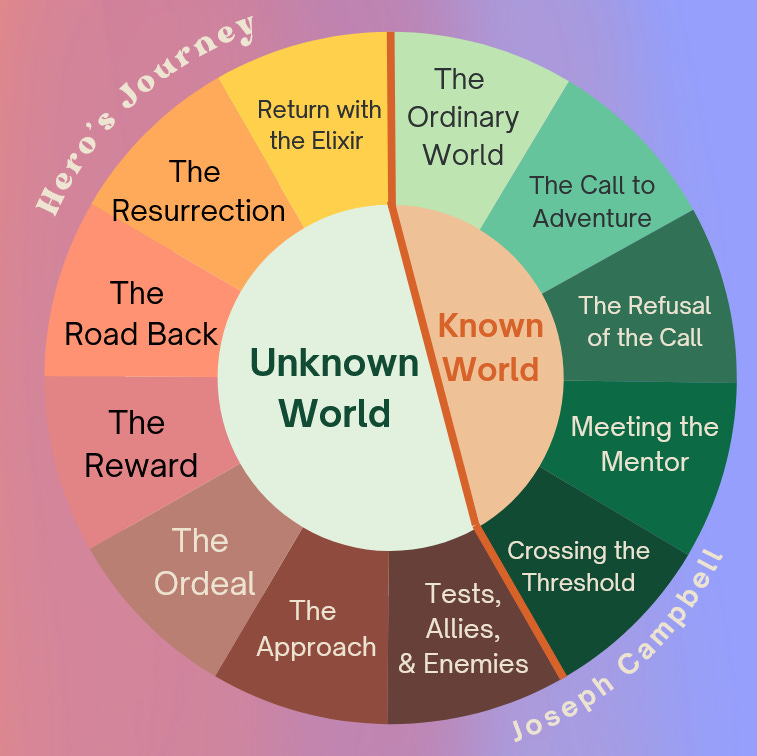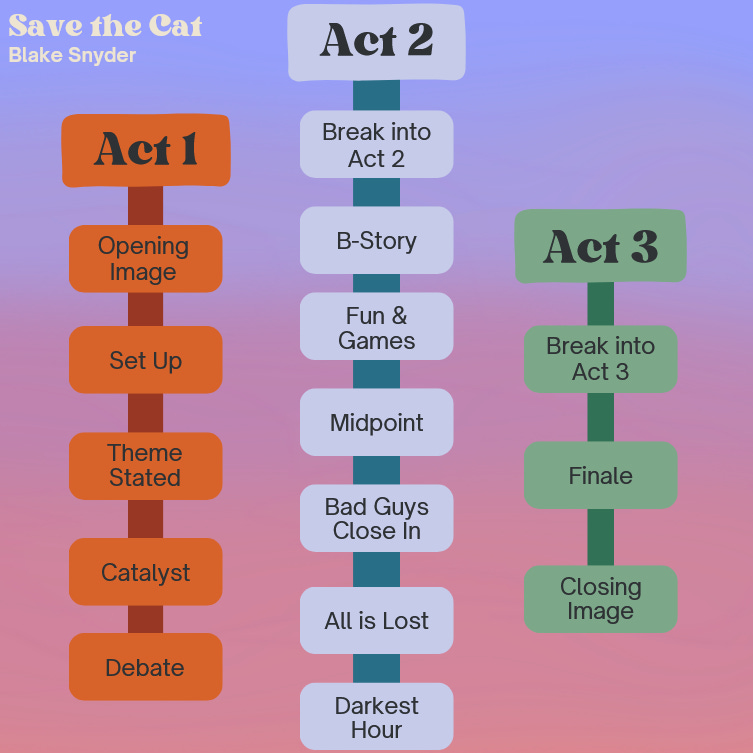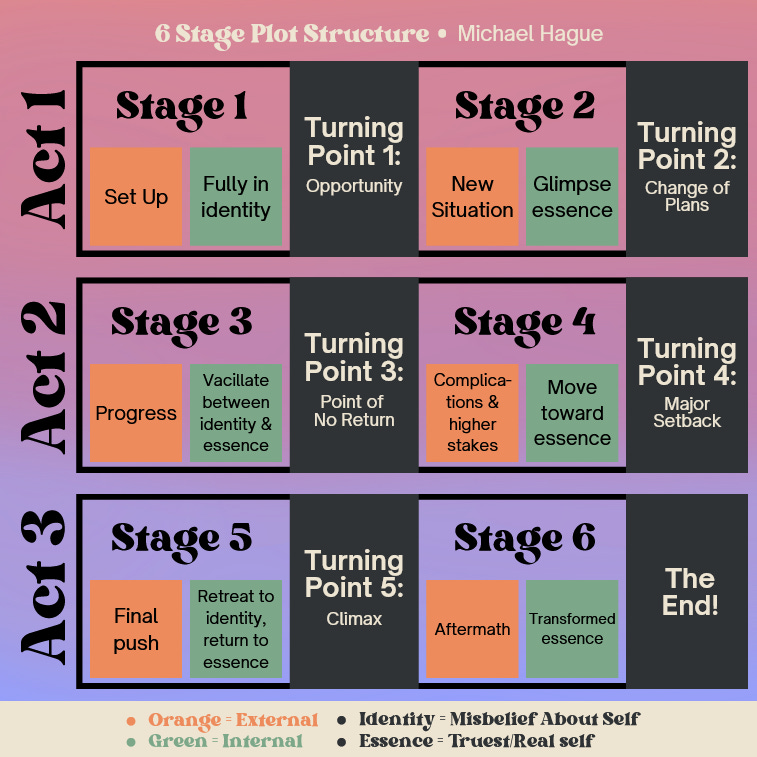what's the plan? outline methods & tips!
a note from sarah with an h on her favorite ways to outline her rough drafts
Hey, Rough Drafters!
This is for all the outline fans out there. Here are some tips on different outline structures that might help you while you blueprint your Rough Draft! I hope there is something helpful here whether you are new to outlining or a veteran. This is not a comprehensive list. I totally recommend digging into other narrative structures, seeing how they tick, and deciding what works for you!
✏️ The Hero’s Journey • Created by Joseph Campbell
(using the simplified terms from Christopher Vogler)
The Hero’s journey is the backbone of most outline structures. The only difficult thing is a lot of these terms are still derived from classic mythic structure and are less applicable today. However, since it has been so well dissected and discussed, there are so many resources to help transpose the terms to narratives that involve less sword-and-shield-heroism. It might take a little time to understand each beat and what it can mean for you and your story, but this is such a well loved structure and will give your story some solid backbone! This structure is best suited for an adventure story where characters travel from one place to another, but you can get creative about what that adventure or journey looks like. At its most basic, though, the hero’s journey will help take your characters on quests in a far off place—whether it’s in the stars, across the continent, or in a world of your own making.
⭐ Great media examples of ‘journey’ narratives are: Star Wars (pick one really), Little Miss Sunshine, Lord of the Rings, and Life of Pi.
✏️ Save the Cat • Created by Blake Snyder
Save the Cat was originally intended for screenwriting. Its best application is in scripting, whether that be screenwriting, plays, games, or comics. The first and last beats help to set a tone for your story, which is crucial for script writing and opening/ending shots in films, but this concept can be just as important in prose. Consider using guidelines from this structure to plan your first and last scenes before you get to November.
⭐ You will recognize Save the Cat in most films, and you can find beat sheets to match films for example on the Save the Cat website.
✏️ Six Stage Outline by Michael Hauge
This structure is great to keep simple with bullet points or expand for more depth. In this outline there are only 11 beats—6 stages and 5 turning points. Turning points are the highest moment of external conflict. Ideally, internal and external conflict escalate at each turning point. Identity deals with character’s misbeliefs about themselves as the narrative drives them to be their most authentic self. This outline focuses on developing both internal and external struggles. If your story is particularly character-driven, this structure might be the one for you.
⭐ Many stories follow this structure but the one I was taught off of is the greatest movie of all time. Shrek.
✏️ Tips and Tricks:
Try drawing your arc with notes out on paper. This arc can silly: include dead ends, drop offs, spirals, tangles, anything! This helps visualize the ups and downs of the narrative. Also great to do after you’ve completed outlining for a visual aid.
Sometimes... one outline model is not enough! Mix and match your favorite terms and structures in the manner you feel best assists your narrative structure. Don’t be afraid to make it your own!
Read in your medium (novels, scripts, poems, etc.) and notate pages and scenes where the major beats happen. This really helps engage your brain and makes you more familiar with plot structure!
My favorite method to outline is the MLA outline structure. Using a template like this helps me put all of my ideas into place. I don’t have an excuse for not knowing what to do. This helps lock me in!
✏️ Uh oh, Secret Plantser Agenda!
If outlining the ending first doesn’t work for you, outline everything EXCEPT the ending! Leave something for you to discover once you get there!
Sometimes you need to take a step back. Maybe don’t make a 10 page outline. Maybe make 10 bullet points. Outline as much or as little as you need to.
Occasionally overplanning can cause me to lose the joy in my writing! Make sure to really experiment to find what works best with you and your style! Sometimes that means... making a less in-depth outline. This is a call out post for me (Sarah with an ‘h’) specifically.
✏️ Technically, I like to combine elements of all three of these plot structures, but Michael Hauge’s 6 stage outline is my favorite. It’s a very good structure for adjusting to your outlining style, whether you want to do just the bare bones plot points, or you want to use them as the waypoints as you plot out scene by scene. I like to use the stages and turning points as the headings and subheadings to my outline. I hope these tips are able to help you in your outlining journey, both planner and plantser alike. If you know of any other helpful tips for outlining, please share them with us!
Thanks for tuning in, happy drafting!
-Sarah with an ‘H’





